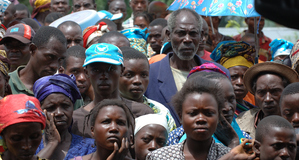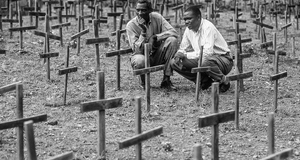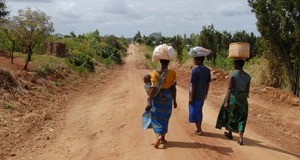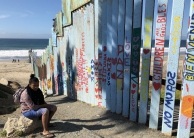Featured Article:Addressing the Use of Sexual Violence as a Strategic Weapon of War
By
2013, Vol. 5 No. 04 | pg. 2/2 | « Framework of International LawThe practice of rape warfare is diametrically opposed to the principles conveyed in customary international law. According to Kauzlarich & Kramer (1998), the first of these has been upheld since the 1907 Hague Conventions in that both combatants and noncombatants are protected from unnecessary and aggravated suffering. Secondly, distinction must always be made between combatants and civilians (p. 26). Subsequently, the 1948 Genocide Convention prohibited the conspiracy, attempt, complicity, incitement, and/or actual execution of genocide or “ethnic cleansing.” Moreover, the 1949 Geneva Conventions (I-IV) specifically condemned violence to life or person and mutilation, as well as the cruel treatment and torture of combatants and civilians (p. 23). Perhaps even more importantly, the Nuremberg Charter explicitly demonized crimes against humanity, such as inhumane acts committed against civilians, regardless of whether or not the violation is considered a crime according to the law of the nation wherein it was perpetrated (p. 32). Such humanitarian principles were intentionally applied to armed conflicts as expressed in the United Nations General Assembly Resolution 244 (XXIII) of 1965 (p. 26). Accordingly, there is a significant legal framework within which to prosecute war criminals who have condoned or practiced rape warfare. However, history has shown that the deficiency lies in enforcement (Clifford, 2008). The International Criminal Court (ICC) has been repeatedly criticized by feminist scholars as being virtually impotent in the prosecution of rape warfare perpetrators. Only recently has the ICC begun to investigate and indict, though most cases rarely evolve beyond the investigation phase (Halley, 2008). Fortunately, recent cases have demonstrated an improving trend in prosecution (Haddad, 2011; Malone, 2008). The sheer heinousness of violent sex crime is a sufficient catalyst to conjure public demand for the persecution of offenders from victims, advocates, and concerned citizens (Winnick, 2008). Provided there is sufficient pressure, this inevitably translates into political necessity for those who wish to maintain their station (Barker, 2007). For example, though sex offenders comprised an insignificant portion of overall arrests in the United States, their rate of incarceration has increased some 15% since 1980; higher than the rate for any other contemporary violent crime. Public demand is almost entirely responsible for this trend; and so can it be in the case of rape warfare (S. Holmes & R. Holmes, 2009, p. 275). Relevant international human-rights and criminal laws are already in place (Kauzlarich & Kramer, 1998, pp. 23, 26, 32). However, the need for adequate awareness, education, and access remains. A victim who understands that he or she has suffered a sexual assault as defined under international law is comparably more likely to report the crime (Allen, 2007; Spohn & Horney, 1996). However, this will only happen if policy makers and legislators can convey through judicious action that these laws are taken seriously and properly enforced. The Hague hosted the Yugoslav war-crimes tribunal, which specifically investigated the use of rape and sexual slavery as a means of ethnic cleansing during the 1992-95 Bosnian war (Thornberry, 1996). Therein, in accordance with the aforementioned customary principles, a judge sentenced three soldier-rapists to a combined term of 60 years for what he regarded as acts of utter disrespect for the victims’ dignity and violations of fundamental human rights (Hargreaves, 2001). This demonstrates that crimes against humanity, such as rape warfare, transcend local and even national jurisdictions. Moreover, they are no longer regarded as mere violations of international war rules. Rather, they are to be individually assessed as crimes under human-rights law (Askin, 1999; Haddad, 2011). Rulings such as this offer hope to the countless survivors who have suffered sexual assaults amid the turmoil of armed conflict. However, many feminists and victims’ advocates condemned the Yugoslav decision as being far too lenient (Hargreaves, 2001). In reality, the recent International Criminal Tribunal rulings have produced equitable sentences under notoriously vague and misleading international humanitarian laws (Askin, 1999). What these advocates are truly expressing is discontent with the resultant “justice” brought forth by the enforcement of these codes. Indeed, a victim remains victimized whether or not his or her attacker is adjudicated. They are asking for something more.The Humanitarian ApproachThe international community must continue to enforce human-rights law, lest its authority be undermined. This is the first step toward implementing deterrence measures which may prevent future abuses (Askin, 1999; Haddad, 2011). As it is virtually impossible to avert all instances of rape warfare, abuses must be immediately recognized when they occur. Unlike the judicial process, such a strategy focuses on victims and potential victims rather than solely on perpetrators (Shanks & Schull, 2000). It is unlikely that any powerful nation or coalition will readily intervene in a tribal conflict in the absence of economic or strategic interests. Therefore, combating the social consequences of rape warfare on the ground remains primarily within the realm of humanitarian agencies and their healthcare professionals (Bristol, 2006). The cogent humanitarian response necessitates a comprehensive intervention protocol. The immediate physical effects of sexual assault must be treated medically. Beyond simple triage, this includes the administration of antibiotics, screening for sexually-transmitted diseases, and emergency contraception (Shanks & Schull, 2000). Moreover, psychological support and counseling should be accessible to victims since emotional problems often manifest in the aftermath of sexual assault. It is advisable that referrals for these services be issued out by the medical first responders (Koss, 1993). This is especially important given that the period of two years following the attack is often the most traumatic time for victims (S. Holmes & R. Holmes, 2009, p. 259). It is paramount that proper documentation be maintained and that avenues for reporting are accessible; not just in the immediate aftermath, but bearing in mind that a victim may decide to report at a later date. Accordingly, “rape kits” are an effective method by which physical evidence can be gathered and preserved. In combination with victim and eye-witness statements, a sufficient amount of evidence may be collected in order to facilitate criminal charges (Feldberg, 1997; Johnson, Peterson, Sommers, & Baskin, 2012). Thereby, the appropriate humanitarian response fulfills the basic requirements needed to pursue criminal prosecution. ConclusionBeyond the immediate physical effects, victims of rape experience intense emotional and psychological suffering long after the commission of the crime, often feeling ashamed, humiliated, and dehumanized. These intangible byproducts of sexual victimization impede the recovery process while simultaneously deterring victims from reporting (Allen, 2007; Koss, 1993). In addition to feeling totally helpless during the encounter, victims of sexual violence are often left with no available avenues by which to bring their aggressors to justice (Hastings, 2002). Consequently, rape remains one of the most underreported and subsequently under-prosecuted war crimes. The decision not to report in such instances may be due to a lack of accessibility rather than a conscious choice (Falcon, 2001; Weiss, 2010). Indeed, a “fortunate” few may live to recount their stories to psychologists, criminologists, and other scholars so that their narratives may be added to the compendium of existing research. However, it remains unlikely that they or their attackers will ever see the inside of a courtroom as these crimes have historically gone unanswered in any meaningful way by the international community. The oft-repeated trend in most cases is that the innocent suffer while the trespasses of the wicked go unpunished (Clifford, 2008; Halley, 2008). These dire circumstances necessitate the simultaneous application of international law and humanitarian aid. Only a preponderance of evidence and vocal advocacy can provide the needed inertia to move rape warfare out of the shadows to where it can no longer be ignored. ReferencesAllen, W. D. (2007). The reporting and underreporting of rape. Southern Economic Journal, 73(3), 623-641. Askin, K. D. (1999). Sexual violence in decisions and indictments of the Yugoslav and Rwandan tribunals: Current status. The American Journal of International Law, 93(1), 97-123. Baaz, M. E. & Stern, M. (2009). Why do soldiers rape? Masculinity, violence, and sexuality in the armed forces in the Congo (DRC). International Studies Quarterly, 53(2), 495-518. doi:10.1111/j.1468-2478.2009.00543.x Barker, V. (2007). The politics of pain: A political institutionalist analysis of crime victims’ moral protests. Law & Society Review, 41(3), 619-663. Bergoffen, D. B. (2006). From genocide to justice: Women’s bodies as a legal writing pad. Feminist Studies, 32(1), 11-37, 192. Bijleveld, C., Morssinkhof, A., & Smeulers, A. (2009). Counting the countless: Rape victimization during the Rwandan genocide. International Criminal Justice Review, 19(2), 208-224. doi:10.1177/1057567709335391 Bristol, N. (2006). Military incursions into aid work anger humanitarian groups. The Lancet, 367(9508), 384-386. Buss, D. E. (2009). Rethinking ‘rape as a weapon of war’. Feminist Legal Studies, 17(2), 145-163. doi:10.1007/s10691-009-9118-5 Castillo, P. (2007). Rethinking deterrence: The International Criminal Court in Sudan. UNISCI Discussion Papers, 13, 167-184. Clay-Warner, J. & McMahon-Howard, J. (2009). Rape reporting: “Classic rape” and the behavior of law. Violence and Victims, 24(6), 723-743. Clifford, C. (2008). Rape as a weapon of war and its long-term effects on victims and society. Paper presented at the 7th Global Conference: Violence and the Contexts of Hostility. Budapest, Hungary. Donovan, P. (2002). Rape and HIV/AIDS in Rwanda. The Lancet, 360, s17-18. Durkham, H. & O’Byrne, K. (2010). The dialogue of difference: Gender perspectives on international humanitarian law. International Review of the Red Cross, 92(877), 31-52. doi:10.1017/s1816383110000032 Dwyer, P. G. (2009). “It still makes me shudder”: Memories of massacres and atrocities during the Revolutionary and Napoleonic Wars. War in History, 16(4), 381-405. doi:10.1177/0968344509341681 Epp, M. (1997). The memory of violence: Soviet and East European Mennonite refugees and rape in the Second World War. Journal of Women’s History, 9(1), 58-87. Falcon, S. (2001). Rape as a weapon of war: Advancing human rights for women at the U.S.-Mexico border. Social Justice, 28(2), 31-50. Feldberg, G. (1997). Defining the facts of rape: The use of medical evidence in sexual assault trials. Canadian Journal of Women & the Law, 9(1), 89-114. Ferraro, K. J. (2008). Taken by force: Rap and American GIs in Europe during WWII. Contemporary Sociology, 37(6), 585-586. Ghobarah, H. A., Huth, P., & Russett, B. (2003). Civil wars kill and maim people - Long after the shooting stops. The American Political Science Review, 97(2), 189-202. Gottschall, J. (2004). Explaining wartime rape. The Journal of Sex Research, 41(2), 129-136. Haddad, H. N. (2011). Mobilizing the will to prosecute: Crimes of rape at the Yugoslav and Rwandan Tribunals. Human Rights Review, 12(1), 109-132. doi:10.1007/s12142-010-0163-x Hagan, J., Rymond-Richmond, W., & Parker, P. (2005). The criminology of genocide: The death and rape of Darfur. Criminology, 43(3), 525-561. Halley, J. (2008). Rape in Berlin: Reconsidering the criminalization of rape in the international law of armed conflict. Melbourne Journal of International Law, 9(1), 78-124. Hargreaves, S. (2001). Rape as a war crime: Putting policy into practice. The Lancet, 357(9258), 737. Hastings, J. A. (2002). Silencing state-sponsored rape: In and beyond a transnational Guatemalan community. Violence Against Women, 8(10), 1153-1181. doi:10.1177/107780102320562673. Hoffman, M. H. (1999). Is the Holocaust unique?: Perspectives on comparative genocide / the myth of rescue: Why the democracies could not have saved more Jews from the Nazis. Parameters, 29(1), 177-178. Hogg, N. (2010). Women’s participation in the Rwandan genocide: Mothers or monsters? International Review of the Red Cross, 92(877), 69-102. doi:10.1017/s1816383110000019 Holmes, S. T. & Holmes, R. M. (2009). Sex crimes: Patterns and behavior (3rd ed.). Thousand Oaks, CA: SAGE. Jamieson, R. (1999). Genocide and the social production of immorality. Theoretical Criminology, 3(2), 131-146. doi:10.1177/1362480699003002001 Johnson, D. Peterson, J., Sommers, I., & Baskin, D. (2012). Use of forensic science in investigating crimes of sexual violence: Contrasting its theoretical potential with empirical realities. Violence Against Women, 18(2), 193-222. doi:10.1177/1077801212440157 Kauzlarich, D. & Kramer, R. C. (1998). Crimes of the American nuclear state: At home and abroad. Boston, MA: Northeastern University Press. Koss, M. P. (1993). Rape: Scope, impact, interventions, and public policy responses. American Psychologist, 48(10), 1062-1069. doi:10.1037/0003-066X.48.10.1062 Leitenberg, M. (1994). Rwanda, 1994: International incompetence produces genocide. Peacekeeping & International Relations, 23(6), 6-10. MacDonald, D. B. (2005). Forgetting and denying: Iris Chang, the Holocaust and the challenge of Nanking. International Politics, 42(4), 403-427. Maedl, A. (2011). Rape as a weapon of war in the Eastern DRC? The victims’ perspective. Human Rights Quarterly, 33(1), 128-147, 261. Malone, D. M. (2008). International criminal justice: Just an expensive mirage? International Journal, 63(3), 729-741. Meini, B. (2008). HIV/AIDS, crime and security in Southern Africa. African Journal of Criminology and Justice Studies: AJCJS, 3(2), 35-84. Mukamana, D. & Brysiewicz, P. (2008). The lived experience of genocide rape survivors in Rwanda. Journal of Nursing Scholarship, 40(4), 379-384. Parfitt, T. (2004). Russian soldiers blamed for civilian rape in Chechnya. The Lancet, 363(9417), 1291. Ross, A. (2004). Truth and consequences in Guatemala. GeoJournal, 60(1), 73-79. Sedgwick, J. (2009). Memory on trial: Constructing and contesting the ‘Rape of Nanking’ at the International military tribunal for the Far East, 1946-1948. Modern Asian Studies, 43(5), 1229-1254. doi:10.1017/S0026749X08003570 Shanks, L. & Schull, M. J. (2000). Rape in war: The humanitarian response. Canadian Medical Association Journal, 163(9), 1152-1156. Spohn, C. C. & Horney, J. (1996). The impact of rape law reform on the processing of simple and aggravated rape cases. Journal of Criminal Law & Criminology, 86(3), 861-884. Staub, E. (1999). The origins and prevention of genocide, mass killing, and other collective violence. Peace and Conflict: Journal of Peace Psychology, 5(4), 303-336. Thornberry, C. (1996). Saving the war crimes tribunal. Foreign Policy, 104, 72-86. Thornhill, R. & Palmer, C. T. (2000). Why men rape. Sciences, 40(1), 30-36. Valenius, J. (2004). Living in an over-organized jungle: Military discipline, masculinity and rape in Casualties of War. Paper presented at the Annual Meeting of the International Studies Association. Montreal, Canada. Vandermassen, G. (2011). Evolution and rape: A feminist Darwinian perspective. Sex Roles, 64, 732-747. doi:10.1007/s11199-010-9895-y Vikman, E. (2005). Ancient origins: Sexual violence in warfare, part I. Anthropology & Medicine, 12(1), 21-31. doi:10.1080/13648470500049826 Weiss, K. G. (2010). Too ashamed to report: Deconstructing the shame of sexual victimization. Feminist Criminology, 5(3), 286-310. doi:10.1177/1557085110376343 Weitsman, P. A. (2008). The politics of identity and sexual violence: A review of Bosnia and Rwanda. Human Rights Quarterly, 30(3), 561-578. Whitmer, B. (2006). “Torture chambers and rape rooms”: What Abu Ghraib can tell us about the American carceral system. CR: The New Centennial Review, 6(1), 171-194, 285. Winnick, T. A. (2008). Another layer of ignominy: Beliefs about public views of sex offenders. Sociological Focus, 41(1), 53-70. Zimbardo, P. (2007). The Lucifer effect: Understanding how good people turn evil. New York, NY: Random House. Suggested Reading from Inquiries Journal
Inquiries Journal provides undergraduate and graduate students around the world a platform for the wide dissemination of academic work over a range of core disciplines. Representing the work of students from hundreds of institutions around the globe, Inquiries Journal's large database of academic articles is completely free. Learn more | Blog | Submit Latest in Law & Justice |
















